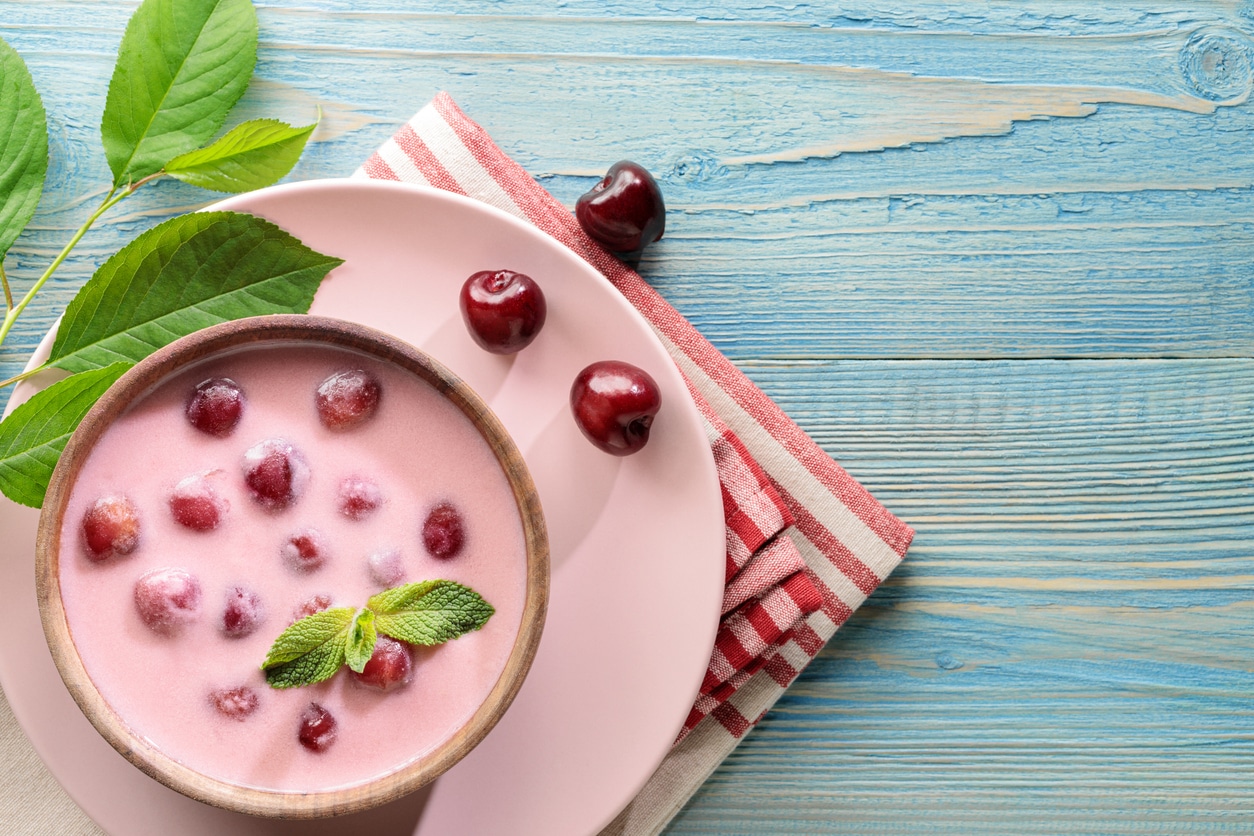Hungarian Fruit Soup: A Taste of Tradition
Hungary is a country rich in culinary traditions, and one of its most distinctive dishes is Hungarian fruit soup (gyümölcsleves). A chilled, sweet soup made from fresh or dried fruits, it is both a refreshing summer treat and a comforting reminder of Hungary’s unique gastronomic heritage.
A brief history
Hungarian fruit soup (gyümölcsleves) has been a part of Hungarian cuisine for centuries. Its origins are tied to the abundance of fresh fruits available in the region, such as cherries, plums, peaches, and apricots. Hungarian fruit soup reflects a culinary legacy that emphasizes seasonal produce and creative uses for it.
Historically, fruit soups were not unique to Hungary – they appeared in various European cuisines, often as part of feasts or as desserts. However, Hungary’s version has taken on special significance as a staple dish that blends sweet and savory flavors with a touch of tanginess, often from sour cream or yogurt.
Why and When Is It Eaten?
Hungarian fruit soup is especially popular in the warmer months when fresh fruits are at their peak. Served cold, it provides relief from the summer heat and is often enjoyed as a light appetizer or even a dessert during lunch or dinner.
The soup is versatile: families might prepare a simple version for casual meals, while more elaborate variations can grace the table at special occasions. It’s a dish that evokes nostalgia for many Hungarians – grandmothers and mothers passing down recipes that carry the essence of their family traditions.
Opinions of Strangers
For foreigners encountering Hungarian fruit soup for the first time, reactions can vary widely. Some are delighted by its refreshing taste and the unique concept of a sweet soup, describing it as a pleasant surprise. Others, accustomed to savory soups, might initially find the idea of a dessert-like soup unusual but grow to appreciate its charm after a few spoonfuls.
Travelers often marvel at how such a simple dish manages to encapsulate the spirit of Hungarian hospitality and creativity. Those with an adventurous palate may praise the use of sour cream or spices like cinnamon and cloves, which add depth to the flavors. In contrast, some might be less enthused, preferring their fruits in more traditional dessert forms.
Hungarian fruit soup continues to win hearts with its vibrant color, rich flavor, and cultural significance, proving that even the simplest dishes can tell powerful stories.
Vocabulary
| culinary tradition | kulináris hagyomány |
| distinctive | megkülönböztető, jellegzetes |
| refreshing | frissítő |
| treat | finomság |
| reminder | emlékeztető |
| abundance | bőség |
| available | elérhető, megszerezhető |
| to emphasize | hangúlyozni, kiemelni |
| unique | egyedi |
| to appear | megjelenjenni |
| significance | jelentőség |
| staple dish | itt: jellegzetes étel |
| to blend | keveredni, keverni |
| tanginess | csípősség |
| at one’s peak | valaminek a csúcsán |
| to provide relief from | enyhülést hozni valamiből |
| appetizer | előétel |
| versatile | sokoldalú |
| to grace | itt: megkoronzni valamit |
| to evoke | felidézni |
| to encounter | találkozni |
| to be delighted by | elragadtatva lenni valamitől |
| to be accustomed to | hozzászokva lenni valamihez |
| to appreciate | értékelni |
| charm | varázserő, vonzerő |
| to encapsulate | itt: egységesíteni |
| adventurous | kalandos |






